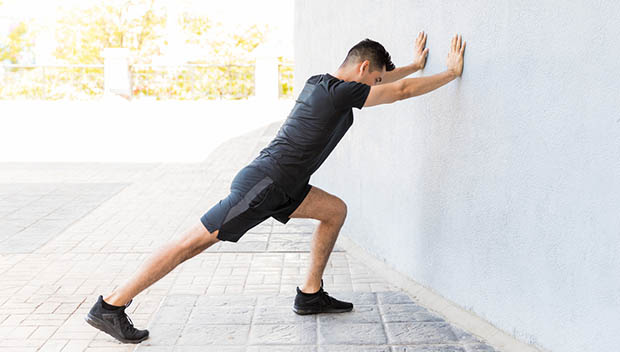Do you spend a lot of time stretching out tight calves and hamstrings?
Stretching has become a core routine component for fitness enthusiasts, in particular, runners, who often dedicate a lot of time stretching out areas that feel ‘tight’. But have you ever found that no matter how much stretching you do your muscles still always seem to feel tight?
Then maybe this is not the approach that you need to be taking.
Firstly, lets discuss stretching:
What people think it does, and what it may actually be doing.
The perception for most people is that stretching a ‘tight’ muscle for a period of time causes the tissues to elongate due to the forces of the stretch. What we know from research however, is that our tissues are extremely robust and it is extremely difficult, and highly unlikely, for us to mechanically increase the length of tissues by holding a passive stretch. In fact one study looked at the IT Band and found that it would take a force of over 9,000 Newtons (think a large bull hanging from your leg) to create a 1% change in tissue length!
Our body just doesn’t work like that. Tissues do not adapt in such a way. What is likely is that prolonged passive stretching creates a short term ‘stretch tolerance’. The nervous systems frees up a bit more range of movement in response to the information it gains from the sensation of the stretch. It is the pattern we are all familiar with – we stretch for a few minutes, we can suddenly toe our toes…but the next time we come to do it, that increase in motion has diminished!
The key message here is that we are not stretching out and ‘releasing’ some tight spot, or permanently elongating our muscles. Our body is just temporarily reacting to the forces and demands being placed on it at that time.
The next thing to address is how it feels!
Stretching feels nice, that’s probably why people like to do it. The muscle feels tight and irritable, it gets stretched, it feels good. But don’t confuse what ‘feels good’ for what is actually ‘doing good’.
Stretching feels good, but as discussed already it may not really be doing a great deal. Again, the act of stretching changes the input to the nervous system, which creates a change in how we feel. But this is short term. This explains why when we stretch it feels like we are helping that ‘tight’ hamstring, but an hour later it feels stiff again.
Why do muscles feel tight?
There are many possible reasons. But one thing to remember when it comes to physical activity is that our body works on a balance of ‘load’ and ‘capacity’. Physical activity places ‘load’ on our body and our body has a finite ‘capacity’ to handle that load. A sedentary person will have a very low capacity to handle load, whereas a physically active person will have a higher capacity. We can increase tissue capacity by gradual exposure to loads and by performing strength work.
If the load exceeds the capacity of the body, then there is a good chance that pain or injury may result. In the first instance this may present as a feeling of tightness or stiffness. So in many cases, a tight muscle is a weak muscle, or a muscle that is struggling to tolerate the physical load being placed upon it.
So, what do I suggest?
Research has shown us that, contrary to popular belief, stretching has a negligible effect on reducing the risk of injury. However, strength training reduced sports injuries by 1/3, and overuse injuries could be almost halved!
So, if you feel like you are forever stretching your muscles only for the stiff feeling to return and never resolve, you may be using the wrong approach. Switch out the stretching for some strengthening and see how your body responds!
Instead of stretching your calves like this:
Try this exercise to build strength and capacity:
Instead of stretching your hamstrings like this:
Try this exercise to develop strength through this movement:
If your calves and hamstrings have been feeling – give these a go!
Perform the exercises 3-4 per week for 3-4 weeks and let me know how you get on!
Contact or comment below – Did they help?!



